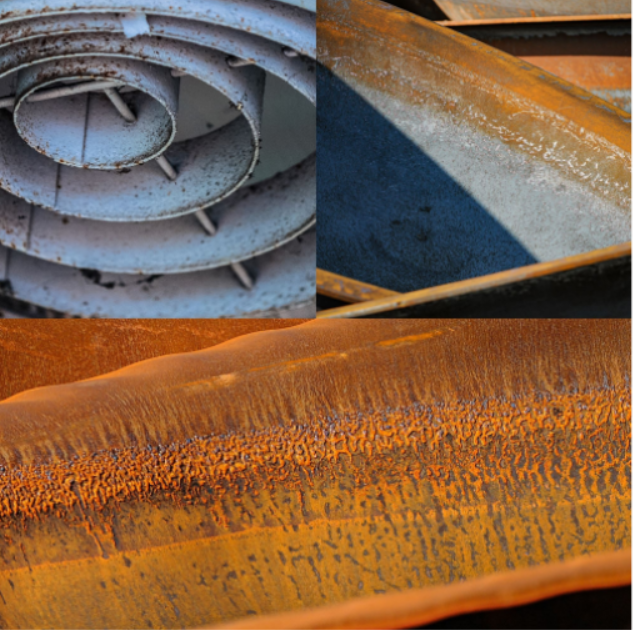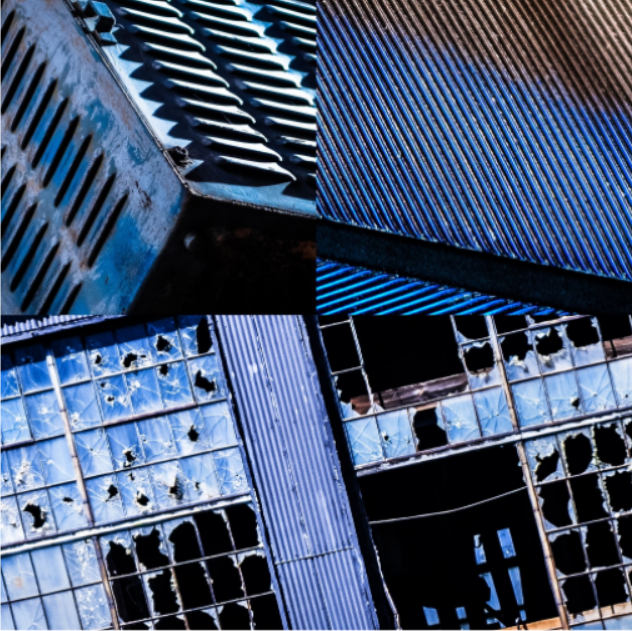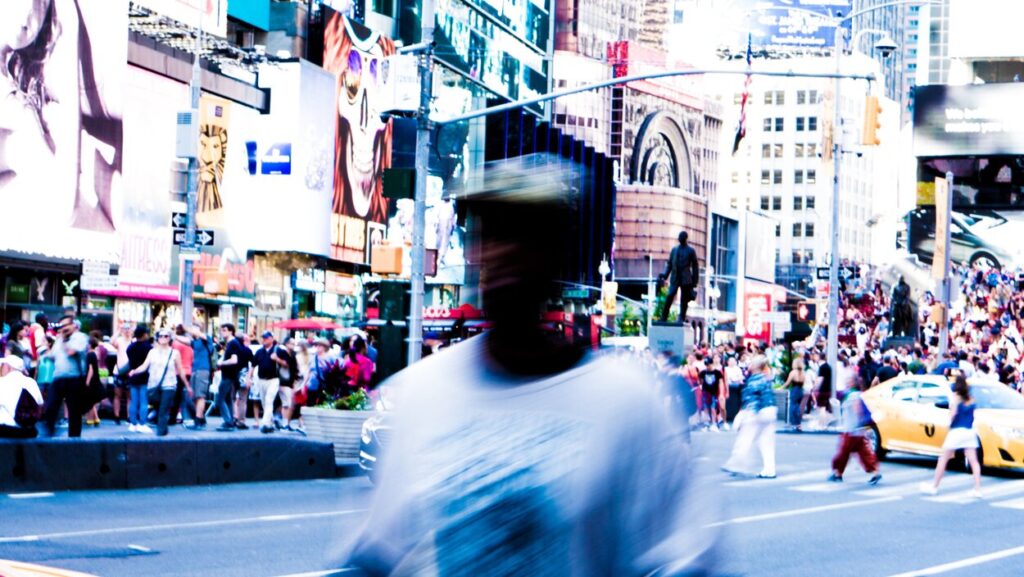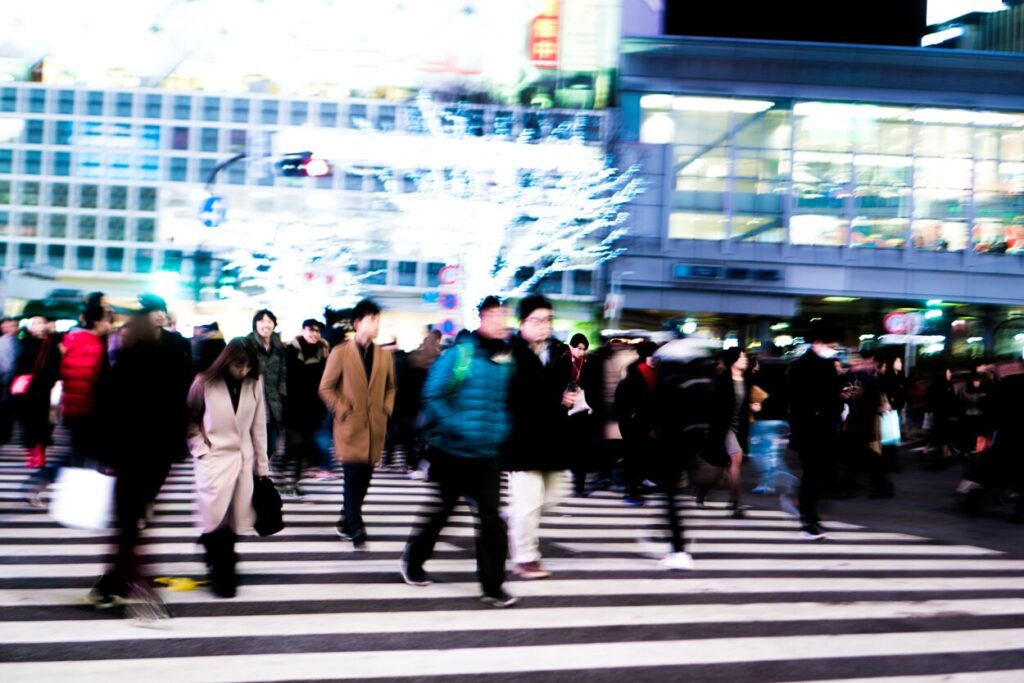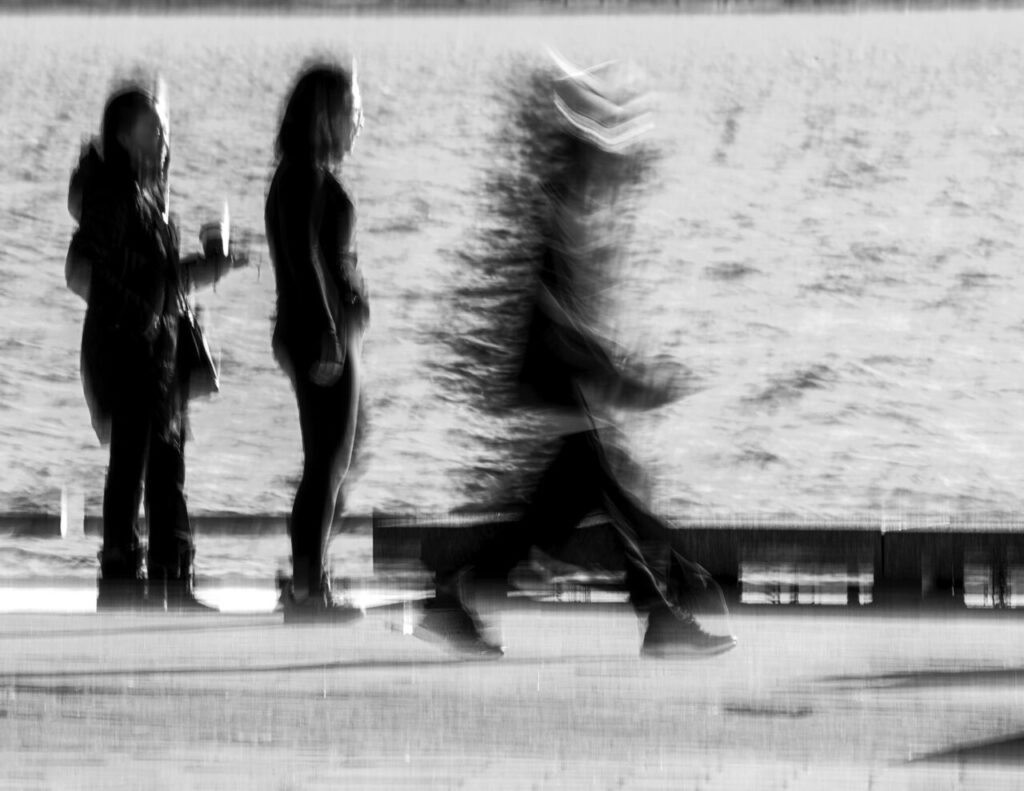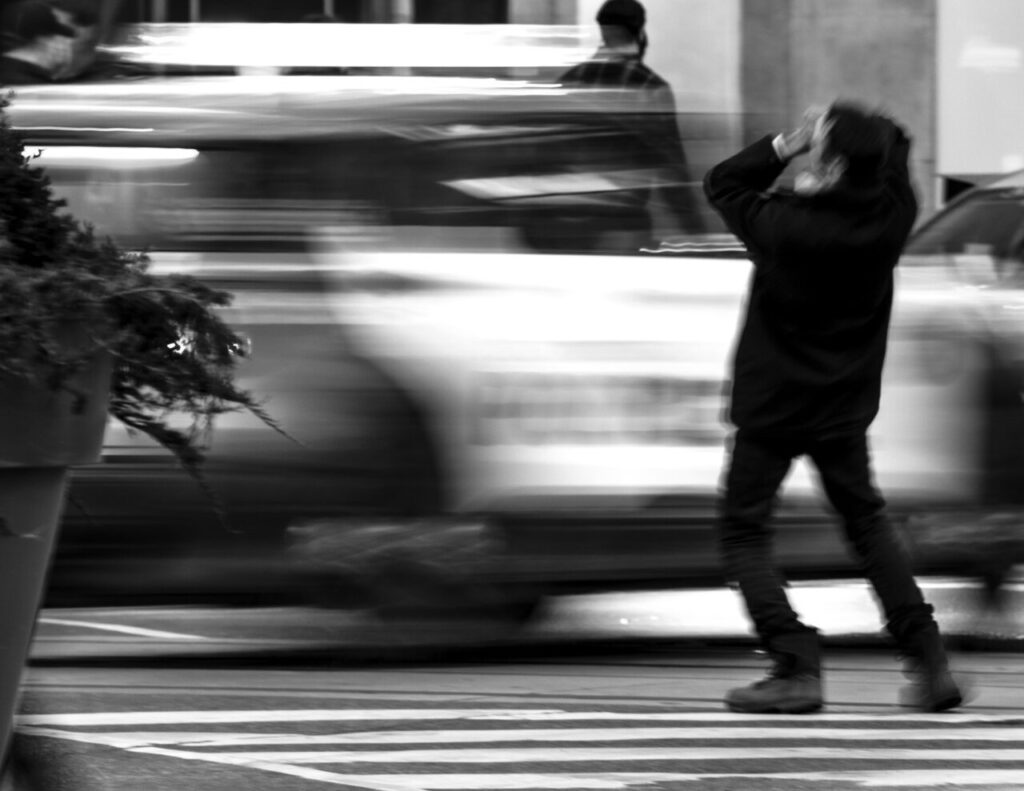Will life return to how it was before 2020? How will it feel to be in a city next year, and subsequent years? Our relationship to the urban environment has been completely upended during the pandemic. I found three photo exhibits, part of the Scotiabank CONTACT Photography Festival, that spur reflection on this changed relationship to the city.
The shows present three different perspectives on the urban experience, perspectives impacted and altered by COVID. First, in the absence of people, the material qualities of the city have moved to the forefront of our experience. Second, in empty spaces, we share a romanticized longing for jostling crowds. Finally, due to the necessity of physical distancing, there has been a profound change in how we interact with others.
For a while, Toronto was a ghost town. Early in the pandemic, once bustling places became eerily vacant. In the absence of people, materials and structures become the salient features of the city. Notice the surfaces, and you see the history of wear and weathering. You see that everything is somewhere on the path to dissolution. Gordon Wenzel’s series ‘globanomics’ explores the colours and textures of scarred materials that make up much of the urban environment. Wenzel’s work focuses on the broken and disused. As Wenzel puts it: “time’s erosion of natural elements ultimately has the final word on progress”.
Gordon Wenzel, vapor trails, 2021, giclee print, 23.98” x 23.98”
Each piece in the globanomics series is comprised of three photos. The constituent images relate to each other through colour and geometry and draw our attention to textures and patterns. The close cropping and variation in scale focuses our gaze on the surfaces. It is the worn materials that become the story – the story that the city tells when people are absent.
Gordon Wenzel, airborne #3, 2021, giclee print, 23.98” x 23.98”
Do you miss crowds? Even if a throng of people was not your thing, a wistful glow now surrounds the idea of busy urban life. Our shared sense of nostalgia is reflected in Shaleen Ladha’s photographs. Her collection A Tale of Two Cities explores the urban centres of New York and Tokyo. It is not just the subject matter that makes these pictures nostalgic, it’s also the technique. The images have the high contrast, shaky feel of old snapshots. Notably, these are the kind of pictures modern phones and cameras with automatic settings are too ‘smart’ to let us easily produce. Manual settings are required to produce this spontaneous snapshot appearance. These blurred, bright and colourful photos capture the frenetic energy of busy streets, the life that so many of us yearn to return to.
Shaleen Ladha, Times Square – New York, 20” x 16”
Shaleen Ladha, Shibuya Crossing – Shibuya, Tokyo, 20” x 16”
Stathis Vlahos also uses long exposures to distort images and blur subjects. But in his case, the result is very different. Vlahos uses the blurs and smears of motion to convey a sense of mystery and in some cases fear and anxiety. The motion of the camera and the movement of people cause figures to dissolve into their surroundings. He calls this collection of images City Spirits – an apt title as his subjects often appear semi-transparent and ephemeral.
Stathis Vlahos, Untitled 9, 2020
Vlahos’ images are evocative and can be interpreted in several ways. Do these spirits represent the fear and distance we have been putting between ourselves and others? Do they represent lost relationships? Lost lives? Or do they perhaps reflect our own transitory existence? They remain compelling yet mysterious.
Stathis Vlahos, Untitled 3, 2020
We don’t know the degree to which the pandemic will impact urban life in the long run. Will there be permanent changes, or will things revert to how they were in 2019? Right now, COVID permeates most of what we see and do – and how we think. It affects the meaning of these photographs regardless of the intention of the artists. In the future, these images may evoke different associations and reactions. It is the nature of art that it does not simply convey one message. The ambiguity in art nudges us to challenge our preconceptions. It allows us to see the world with fresh eyes.
Mikael Sandblom
Images are courtesy of Scotiabank CONTACT Photography Festival
*Exhibition information: this year’s Scotiabank CONTACT Photography Festival has mostly moved online. A small consolation is that the work will be viewable for longer. This article covers three virtual exhibitions: Gordon Wenzel, globanomics, Shaleen Ladha, A tale of two cities and Stathis Vlahos, City spirits.

